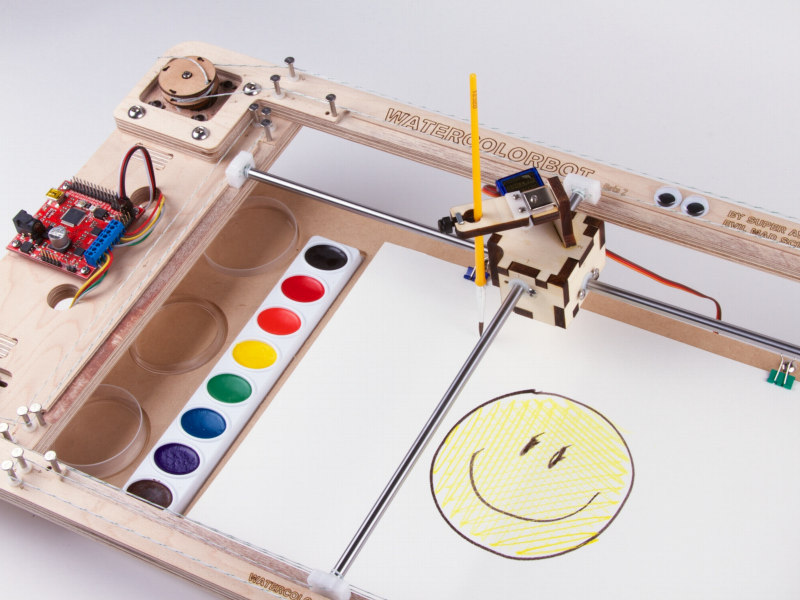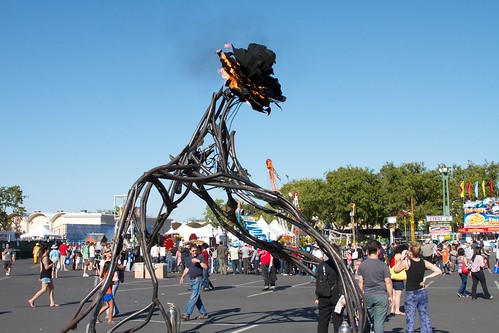
The 2013 Bay Area Maker Faire is a wrap— and it was amazing. And we took pictures. We’ve uploaded 362 photos from maker faire right here for your browsing pleasure. But first, a little preview.

Kids play with giant cardboard robot arms at the Giant Cardboard Robots booth. As they say, “The revolution will be corrugated.”
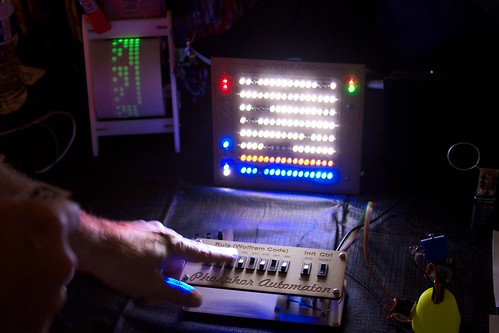
Glo-Puter Zero, by Alan Yates, with its phosphor-based memory. Truly a highlight of the show.
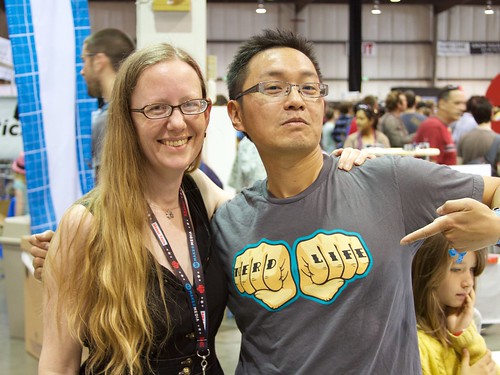
Lenore shares a nerdy moment with Akiba from Freaklabs.
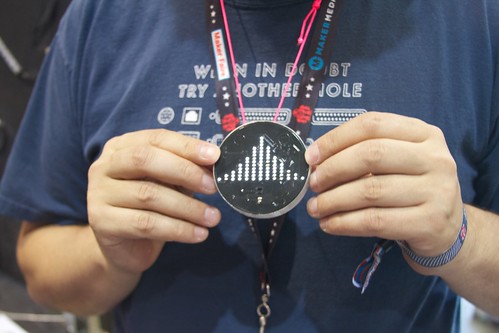
An unusual LED badge, from the Bay Lights project.

The Western Pyrotechnics Association is a club for people that make their own fireworks. It’s incredible to see the complexity and artistry of the fireworks and the tooling that makes them.
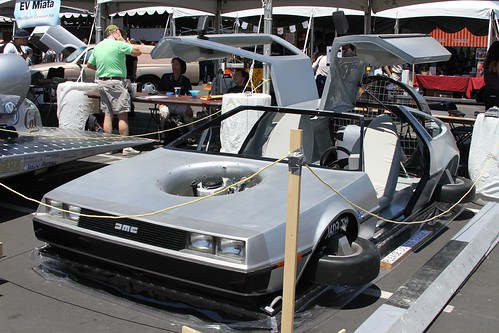
A beautiful hovercraft, designed to look like a flying DeLorean; you can see video of it on the project site.

Back at our booth, the WaterColorBot was a constant hit. Above, Sylvia shows visitors how to sketch with it in real time.
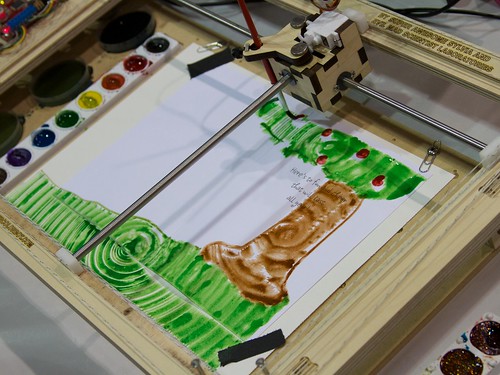

An unexpected application: Our friend Bilal Ghalib stopped by and enlisted the WaterColorBot to help him make a birthday card for another friend.
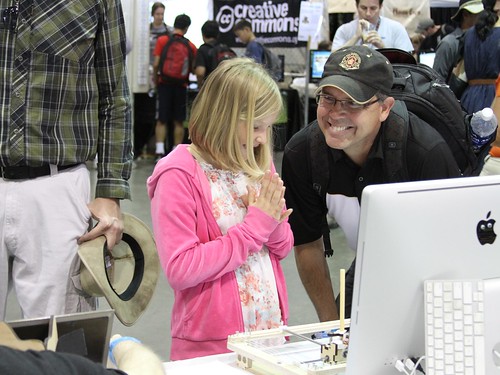
And one of our favorite moments of Maker Faire: a young visitor, tickled pink as she tries out the WaterColorBot, watching it paint a drawing that she had just sketched.
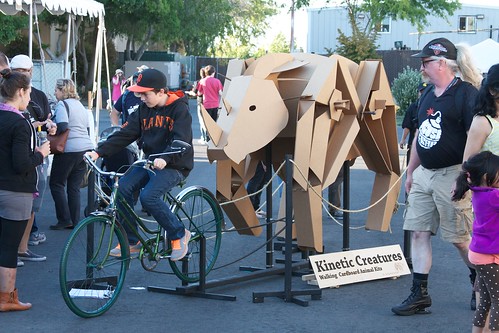
A bicycle-powered cardboard walking rhino, by Kinetic Creatures, makers of walking cardboard robot kits, with Theo Jansen inspired walking mechanisms.
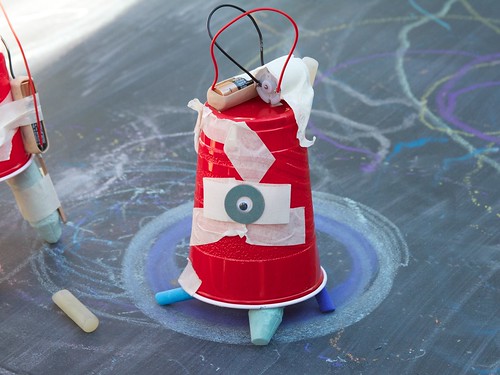
Some of the creations are simpler, like this sidewalk-chalk wielding vibrobot, spinning on a tabletop chalkboard at the Exploratorium booth.
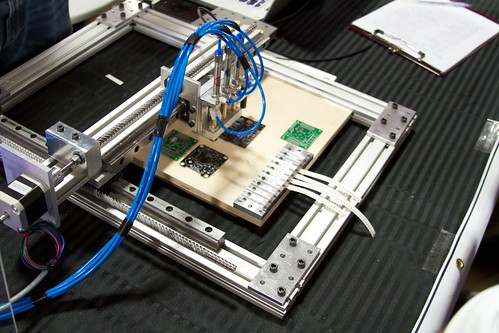
Some of the creations are more technical, like the OpenPNP project to create open source pick and place machines for electronics assembly. We’re excited by where this is headed, along with a few related projects.
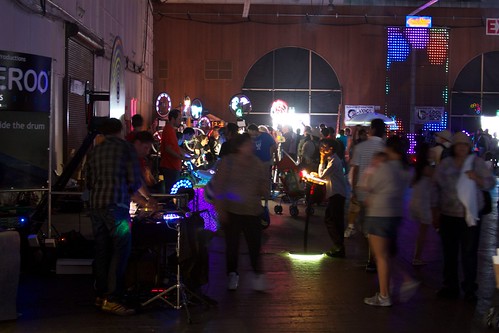
And of course, there’s no shortage of LED goodness.
Please click right here for the rest of our 2013 Bay Area Maker Faire photo album.




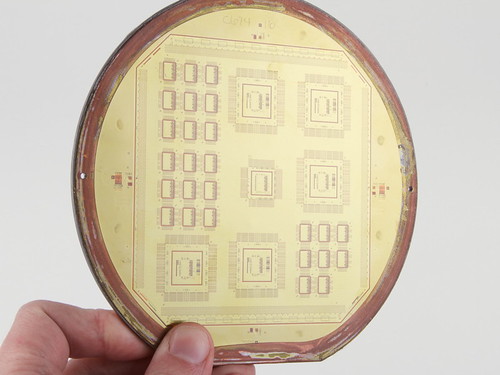








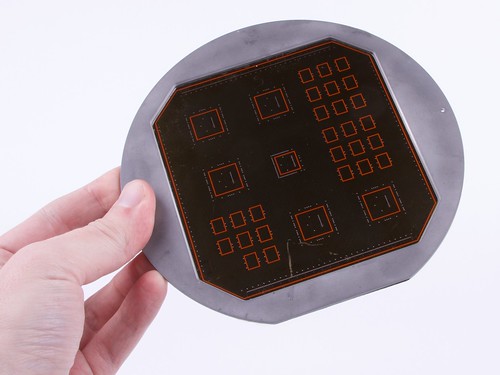
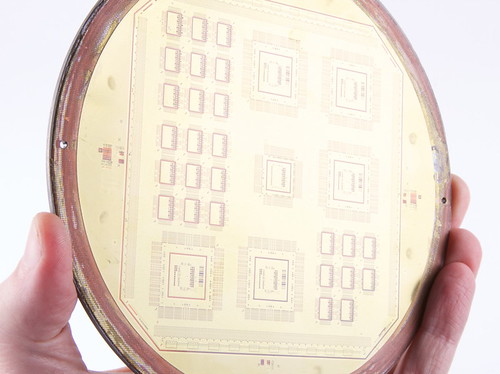



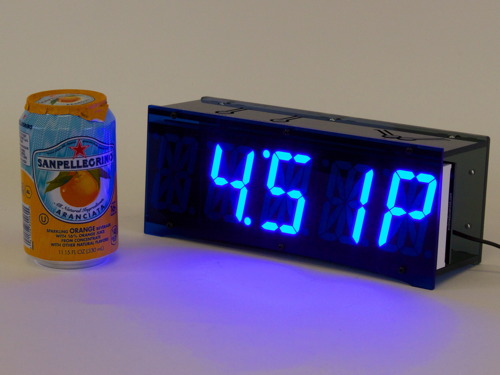


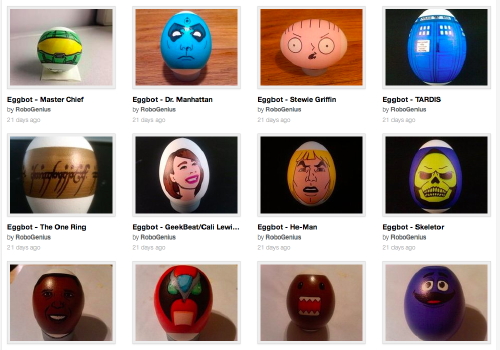

![?? [Senko] - Tokushima LED Art Festival](https://bcdn.evilmadscientist.com/media/2013/05/senkoflash2daylight.jpg)
![?? [Senko] - Tokushima LED Art Festival](https://bcdn.evilmadscientist.com/media/2013/05/senkoflash3dark.jpg)















